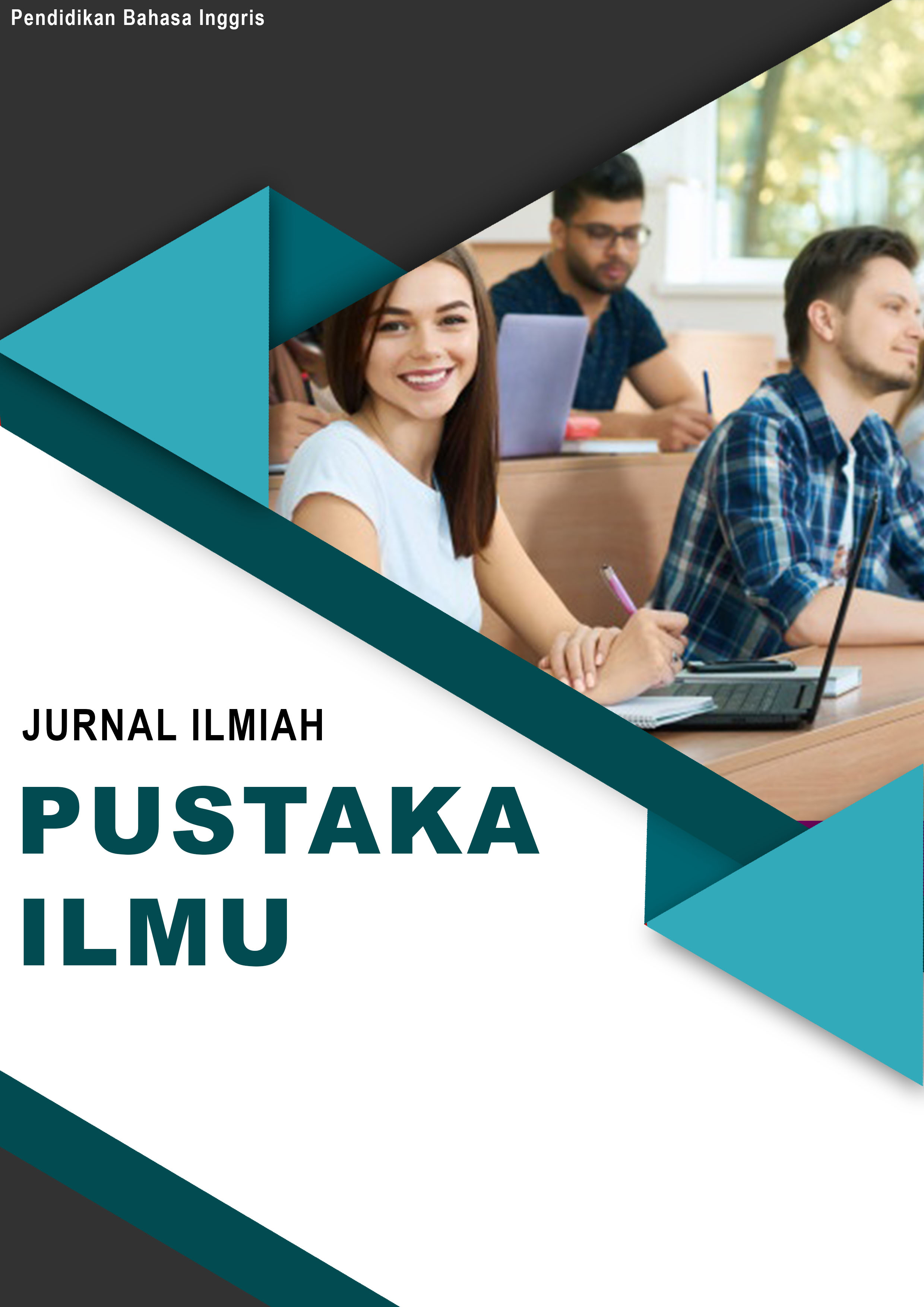RACIAL DISCRIMINATION IN A PRACTICE OF HEGEMONY AS PORTRAYED IN SOLOMON NORTHUP’S TWELVE YEARS A SLAVE
Kata Kunci:
Concept of Hegemony, Prejudice, Racial Discrimination, Slavery.Abstrak
In this research, the researchers discuses racial discrimination in a practice of hegemony. The main purpose of this research is to portray racial discrimination in a practice of hegemony as portrayed in Twelve Years A Slave novel written by Solomon Northup. The researchers applies qualitative descriptive method in doing this research. The object of this research is Twelve Years A Slave novel. The researchers analyzes this research by using the concepts of hegemony that developed by Antonio Gramsci and racial discrimination theory. The researchers collects the data by reading, understanding, taking note the data and then classifying the data that is appropriate the main issue of the research. The researchers finds several points about racial discrimination in practice of hegemony. It can be found by applying three concepts of hegemony they are consent and coercion, moral and intellectual reform, and common sense. The researchers concludes that there are two form of racial discrimination in practice of hegemony those are; Slavery in consent and coercion, prejudice in moral and intellectual hegemony, and slavery in common sense.
Referensi
Ambarwati, R., & Mandasari, B. (2020). THE INFLUENCE OF ONLINE CAMBRIDGE DICTIONARY TOWARD STUDENTS’PRONUNCIATION AND VOCABULARY MASTERY. Journal of English Language Teaching and Learning, 1(2), 50–55.
Berlinda, M. (2015). Teachers’ Beliefs On The Use Of Authentic Materialis To Teach Listening. UNS (Sebelas Maret University).
Damayanti, M. E., & Listyani, L. (2020). AN ANALYSIS OF STUDENTS’SPEAKING ANXIETY IN ACADEMIC SPEAKING CLASS. ELTR Journal, 4(2), 152–170.
Eklesia, G., & Rido, A. (2020). Representation of People with HIV/AIDS in The Jakarta Post and Jakarta Globe: A Critical Discourse Analysis. TEKNOSASTIK, 18(2), 120–133.
Evayani, W., & Rido, A. (2019). Representation of Social Actors in Sexual Violence Issue in The New York Times and The Jakarta Post Newspapers: A Critical Discourse Analysis. Teknosastik, 17(2), 43–55.
Gulö, I. (2014a). The Influence of Nias Language to Bahasa Indonesia. Konferensi Linguistik Tahunan Atma Jaya.
Gulö, I. (2014b). Unique characteristics of Nias language. International Journal of English and Education, 3(3), 26–32.
Handayani, E. T., & Aminatun, D. (2020). STUDENTS’POINT OF VIEW ON THE USE OF WHATSAPP GROUP TO ELEVATE WRITING ABILITY. Journal of English Language Teaching and Learning, 1(2), 31–37.
Kardiansyah, M. Y., & Salam, A. (2021). Reassuring Feasibility of Using Bourdieusian Sociocultural Paradigm for Literary Translation Study. Ninth International Conference on Language and Arts (ICLA 2020), 135–139.
Lusa, S., Rahmanto, Y., & Priyopradono, B. (2020). The Development Of Web 3d Application For Virtual Museum Of Lampung Culture. Psychology and Education Journal, 57(9), 188–193.
Mahfud, I., & Gumantan, A. (2020). Survey Of Student Anxiety Levels During The Covid-19 Pandemic. Jp. Jok (Jurnal Pendidikan Jasmani, Olahraga Dan Kesehatan), 4(1), 86–97.
Mandasari, B. (n.d.). FACTORS INFLUENCING TEACHERS’BELIEFS ON THE USE OF AUTHENTIC MATERIALS TO TEACH LISTENING.
Mandasari, B. (2016). An Analysis of Teachers’ Beliefs toward Authentic Materials in Teaching Listening. Teknosastik, 14(1), 19–25.
Mandasari, B., & Aminatun, D. (2019). STUDENTS’PERCEPTION ON THEIR PARTICIPATION: WHAT AFFECTS THEIR MOTIVATION TO TAKE PART IN CLASSROOM ACTIVITIES? Premise: Journal of English Education and Applied Linguistics, 8(2), 214–225.
Meliasari, R., Ngadiso, N., & Marmanto, S. (2018). The Picture Word Inductive Model: Its Effectiveness to Teach Writing Viewed from Students’ Interest. International Journal of Language Teaching and Education, 2(3), 248–258.
Muliyah, P., & Aminatun, D. (2020). Teaching English for Specific Purposes in Vocational High School: Teachers’ Beliefs and Practices. Journal of English Teaching, 6(2), 122–133.
Muliyah, P., Rekha, A., & Aminatun, D. (2020). Learning from Mistakes: Students’ Perception towards Teacher’s Attitude in Writing Correction. Lexeme: Journal of Linguistics and Applied Linguistics, 2(1), 44–52.
Mulyasari, F., & Putri, S. N. (2020). THE IMPACT OF WHATSAPP GROUP ON UNDERGRADUATE STUDENTS‟ WRITING IN THE INDONESIAN TERTIARY CONTEXT. PROCEEDINGS UNIVERSITAS PAMULANG, 1(1).
Oktaviani, L., Mandasari, B., & Maharani, R. A. (2020). IMPLEMENTING POWTOON TO IMPROVE STUDENTS’INTERNATIONAL CULTURE UNDERSTANDING IN ENGLISH CLASS. Journal of Research on Language Education, 1(1).
Puspaningtyas, N. D., & Ulfa, M. (2021). Students’ Attitudes towards the Use of Animated Video in Blended Learning. The 1st International Conference on Language Linguistic Literature and Education (ICLLLE).
Puspita, D., & Pranoto, B. E. (2021). The attitude of Japanese newspapers in narrating disaster events: Appraisal in critical discourse study. Studies in English Language and Education, 8(2), 796–817.
Pustika, R. (2018). Considering Students’ Reading Interest in Text-Selection to Foster Literacy in the English Classroom. ADJES (Ahmad Dahlan Journal of English Studies), 5(2), 69–77.
Qodriani, L. U., & Kardiansyah, M. Y. (2018). Exploring Culture in Indonesia English Textbook for Secondary Education. JPI (Jurnal Pendidikan Indonesia), 7(1), 51–58.
Rido, A. (2020). Interaction & Pedagogy of Indonesian Vocational English Language Master Teachers. Penerbit Universiti Kebangsaan Malaysia.
Rido, A., & Sari, F. M. (2018). Characteristics of classroom interaction of English language teachers in Indonesia and Malaysia. International Journal of Language Education, 2(1), 40–50.
Saifuddin Dahlan, F. H. (2013). THE INFLUENCES OF PERSONALITY AND COGNITIVE PERCEPTION TOWARDS THE STUDENTS’INTENTION TO USE DATABASE SOFTWARE AT THE COMPUTERIZED ACCOUNTING VOCATIONAL COLLEGES IN LAMPUNG PROVINCE. Universitas Lampung.
Sari, F. M. (n.d.). UNDERGRADUATE STUDENTS’ATTITUDES TO THE IMPLEMENTATION OF WHATSAPP GROUP AS THEIR LEARNING MEDIA IN THE EFL CLASSROOM. Section Editors.
Sari, F. M., & Putri, S. N. (2019). Academic Whatsapp group: Exploring students’ experiences in writing class. Teknosastik, 17(2), 56–65.
Sari, T. D. R., & Sukmasari, D. (2018). Does Organizational Learning and Innovation Influence Performance? Journal of Behavioural Economics, Finance, Entrepreneurship, Accounting and Transport, 6(1), 22–25.
Sinaga, R. R. F., & Pustika, R. (2021). EXPLORING STUDENTS’ATTITUDE TOWARDS ENGLISH ONLINE LEARNING USING MOODLE DURING COVID-19 PANDEMIC AT SMK YADIKA BANDARLAMPUNG. Journal of English Language Teaching and Learning, 2(1), 8–15.
Yulianti, T., & Sulistyawati, A. (n.d.). ENHANCING PUBLIC SPEAKING ABILITY THROUGH FOCUS GROUP DISCUSSION. JURNAL PAJAR (Pendidikan Dan Pengajaran), 5(2), 287–295.
Yulianti, T., & Sulistyawati, A. (2021). Online Focus Group Discussion (OFGD) Model Design in Learning.


